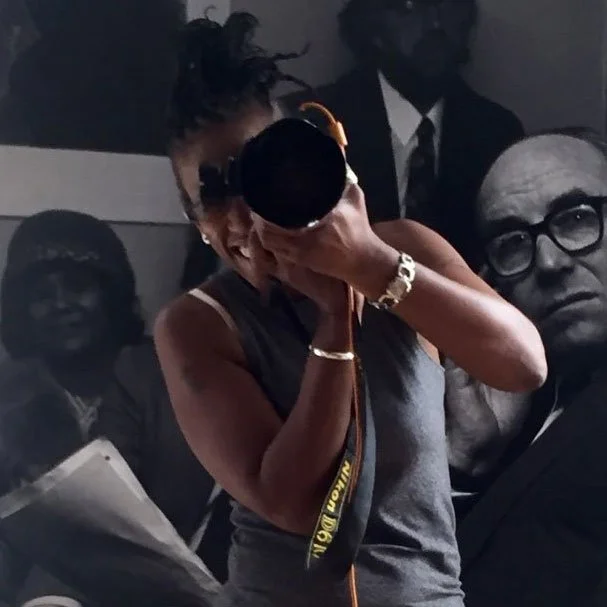People of Letters
People of Letters sets out to uncover and celebrate the contribution made by those who enabled and promoted British writers of colour over the last 250 years. It was the first Museum of Colour gallery to be created (in 2019) and is a rich and immersive experience that travels through time, perspective and content type to bring alive and showcase writers of colour and recognise the people who supported and promoted them and the role publishing played in this journey.
The exhibition was inspired by the correspondence between Laurence Sterne, the Anglo-Irish novelist, Anglican cleric and abolitionist and the British writer, composer and abolitionist Ignatius Sancho, who was born into slavery but became a freedman in London as a young adult.
The world of books, booksellers and publishing is at the heart of People of Letters and the online gallery takes the visitor through the journey made by publishing over the last two centuries and into modern times – including its role in the abolitionist cause and set in the political context of the day. The portraits and biographies demonstrate that the talents of writers of colour are revealed and disseminated not only by those who publish books – but also by those who promote, enable and share their platform.
People of Letters – the portrait gallery and showcase gallery
Curated by David A. Bailey MBE, the portrait gallery and showcase gallery contain portraits, new films and a photography. The portrait gallery features portraits of 33 subjects who enabled or supported the work of writers of colour in the UK between 1776 and 2016.
Ignatius Sancho and Laurence Sterne’s letters and correspondence together with a portrait of Sancho and an open the online exhibition – then the visitor takes a journey via portraits, films, stories and photographs.
Portraits of contemporary subjects are accompanied by a biography and their revealing and intriguing answers to the questions: ‘A book I wish more people knew about’ and ‘What I know to be true’.
David A. Bailey MBE is a respected London-based curator, lecturer and cultural facilitator, and a writer and photographer himself. He is currently Artistic Director of the International Curators Forum, and his work focusses on the notion of diaspora and black representation in art.
People of Letters Portrait Gallery
Portrait subjects selected by Joy Francis and Samenua Sesher.
18th - 19th Century
The book trade enjoyed a surge in popularity during the 18th century due to advances in printing technology and the increasing popularity of reading for leisure amongst the new, wealthier middle-class. The abolitionist cause was greatly enhanced by the publication of writings by black authors and autobiographical accounts of former slaves including the daring escape from slavery of married couple Ellen and William Craft (with Ellen passing as a white planter and William posing as her personal servant). Their book Running a Thousand Miles to Freedom (1860) was published by British publisher William Tweedie and was popular in Britain and the USA.
Portraits include Ignatius Sancho, William Tweedie
20th Century (1960-1970)
The portraits in this part of the gallery reflect the individual efforts of people trying to diversify the publishing world against a cultural establishment that remained white. In 1961 John La Rose arrived in Britain from Trinidad, setting up New Beacon Books in 1966, In 1976 Naseem Khan wrote a report for Arts Council England 'The Arts Britain Ignores' highlighting the rich cultural production in the UK’s ethnic minority communities and how the mainstream arts world ignored them. Rock Against Racism was created in the same year, and across all art forms a similar message was being echoed: that diversity in Britain enriches our culture.
20th Century (1980-1990)
From Margaret Thatcher through to New Labour - this was a time of great change in politics, industry, culture and music and UK young people, including the children of immigrants, explored diverse subcultures through music such as reggae, bhangra, ska and two tone. In the publishing world, more attention was being paid to writers of colour due to the efforts of people like those included in this gallery. In 1990 Hanif Kureishi won the Whitbread Award for his first book The Buddha of Suburbia.
21st Century (2000-2010)
With the start of a new millennium, hopes for a greater diversity in publishing were revived by the popularity of a series of books by and about people of colour. Zadie Smith’s White Teeth (1999), Monica Ali’s Brick Lane (2003), Andrea Levy’s Small Island (2004) and Aravind Adiga’s The White Tiger (2008) all achieved commercial and prize-winning success. But more was needed. From 2003-2008 Arts Council England ‘decibel’ - a cross arts intervention programme, which included the prize ‘decibel Writer of the Year Award’ at the National Book Awards. A decibel commissioned report highlighted the lack of diversity in publishing and organisations such as Words of Colour and the Diversity in Publishing Network) were founded in order to challenge this.
21st Century (2010-2016)
Despite nearly 20% of the UK’s people being classified as from an ethnic minority background, publishing was glacially slow to achieve proportionate representation. Several initiatives were founded to disrupt this status quo including the creation of Bare Lit Festival in 2016, and the creation of awards and prizes such as the annual Jhalak prize for Best Book of the Year by a British writer of colour instigated by Media Diversified. Read about the initiatives that began to break through the barriers in publishing and the stories of some of those manning the barricades to this day as the work continues.
People of Letters
The showcase gallery and screening room
Five of the writers, publishers and activists featured in the People of Letters gallery were asked to offer treasured personal items and artefacts for donation to the Museum. Photographs of the items and the stories behind them and their being chosen are set alongside fascinating filmed interviews with the subjects for an immersive journey through their lives and work.
The interview films feature photographs from the subject’s life, childhood, creative work and activism and go on to explore their donated items and why they are treasured by or significant to them.
The interviewees are Eric Huntley, Courttia Newland, Farhana Shaikh, Sunny Singh and Crystal Mahey-Morgan.
People of Letters
The response gallery
People of letters
The response gallery
What stories can objects tell?
As part of People of Letters, ten contemporary UK writers of colour were commissioned to select and interpret an artefact from the collections at Oxford’s renowned Pitt Rivers Museum and write a piece of work based on their own interpretation. The resulting gallery is a fascinating exploration of how art and the written word can be used to respond to heritage and to the unique collection of rare, significant and sometimes contested material housed in the Pitt Rivers Museum. The online gallery includes biographies of each writer along with photographs of the items and their written response piece in an illuminating and absorbing online journey.
The response artists are: Tayo Aluko, Jay Bernard, Naomi Sumner Chan, Bernardine Evaristo, Colin Grant, Will Harris, Kei Miller, Daljit Nagra, Grace Nichols and Degna Stone.
People of Letters response gallery
Live events
In September 2019, the People of Letters response gallery artists gathered in Oxford with musician Randolph Matthews for two live events to celebrate the launch of the People of Letters exhibition, share the moment with the MoC team and the community - and to bring the gallery to life by readings and performances of their response work in an event full of poetry, prose and music. Talented writers Grace Nichols, Will Harris, Jay Bernard, Kei Miller, Bernardine Evaristo, Daljit Nagra, Colin Grant, Degna Stone and Tayo Aljul all performed their newly commissioned piece of writing, each of which was created in response to objects at the Pitt Rivers – items that include German broadswords, Ghanaian gold weights and an Indian ceremonial conch.
Musician Randolph Matthews was commissioned to work with the responses and create a musical tapestry around the work which was performed at the events which were held at the Oxford Library and at the Pitt Rivers Museum. The events were curated by Melanie Abrahams.
Museum of Colour’s People of Letters exhibition funded by: National Lottery Heritage Fund
Gallery Partners are: Bodleian Libraries / Pitt Rivers Museum / Reform The Funk
The partners are grateful for the support of:
Logos for Arts Council England / Oxfordshire County Council / Queen Mary University of London
Collaborators
Funders
People
-

Annabelle Sami
Researcher and writer
-

David A. Bailey
Co-curator
-

Germma Orleans-Thompson
Project coordinator
-

Mike-Andre Joda
Website designer
-

Samenua Sesher
Co-curator
-

Sharron Wallace
Portrait and artefact photographer









